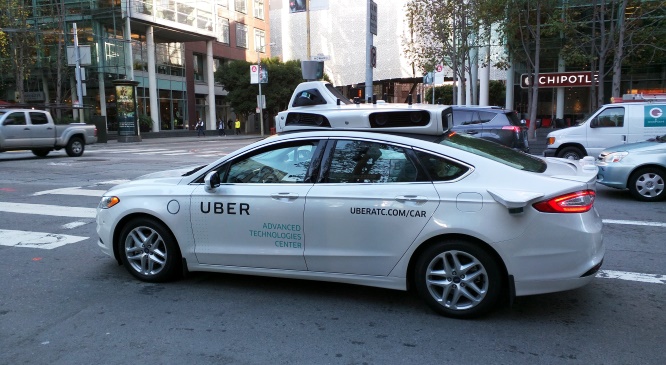36% of adults in America have used a ride-hailing service in 2018 compared to just 15% in 2015. Statistics are often misleading though, and it seems like rural America has yet to buy into the gig-economy revolution: only about 1 in 5 adults living outside of urban centers has ever set foot in an Uber. In this article, we take a look at how the shifting mobility paradigm of America’s great urban centers will impact the rest of the car-loving, rural America.
Ride-sharing deteriorates cars at a much faster pace than traditional ownership. On average, a ride-sharing driver will put about 50,000 miles on their car per year (vs. about 14,000 for a non-professional driver). This means that ride-sharing drivers buy new cars about 4 times more often than average. Although this currently doesn’t amount to much (only about 2% of new cars are purchased by ride-sharing drivers), it’s not hard to see how a customer segment buying cars four times more frequently than ordinary drivers will soon be on the radar of car manufacturers.
So why does it matter if ride-share drivers will inevitably become important to automotive manufacturers? First, because they have very different buying habits than ordinary drivers. Most normal drivers don’t typically drive their car to the end of its usable life, but rather trade the car in because a newer, better, and safer model came out. Manufacturers cater to this need by releasing “facelifts” of their models every couple of years, and major overhauls in six to seven year cycles. So what happens when an increasingly significant portion of the market starts changing cars every couple of years because they have driven them to salvage? Manufacturers will no longer really need to release facelifts, which means that ordinary drivers will be left with fewer model updates to choose from.
Ride-sharing drivers also have different priorities when they choose options on their cars. Given that they need to make a return on their investment, ride-sharing drivers tend to prioritize durability and options that will be valued by their passengers. Choices on rims, paint, and interiors, for example, would then be limited to what is most likely to last and cheapest to fix. Ideally, a car designed exclusively for ride-sharing would have the bare minimum number of consumable parts and swap comfort and user experience for practicality and durability. A major externality of an increasing ride-sharing economy is the inevitable reduction in consumer choice for those who decide not to partake.
Secondly, the used car industry exists because the diversity in consumer needs is catered to by a diversity of car models (e.g., mini-vans and SUVs vs. hatchbacks and coupes). Since consumer needs change at a different rate than the lifespan of a car, some cars will inevitably be passed along to service new consumers (e.g., a young family with kids on the way will probably swap a coupe for a mini-van). If ride-sharing comes to fill at least a portion of the market, it’s not unrealistic to expect that some cars that would have normally been sold as used would not have been bought in the first place, as is evident by the declining sales of coupes in the US. Furthermore, a professional ride-sharing driver is more likely to purchase the “common denominator” equivalent of the motor industry, i.e. a four-door sedan. Again, this means that even if our needs change, there is going to be less choice of second-hand vehicles to cater to these changes. This argument is of course exacerbated by the fact that a car that was driven by a ride-sharing driver is unlikely to have a lot of life left to give to its second-hand owner.
A third, less evident externality is access to spare parts for those cars which do not conform to the standard. It’s unlikely that manufacturers would completely switch to designing and building cars for ride-sharing only, but if most options converge to models that cater to the “common denominator” then any choice of car which sways from the standard is likely to encounter some degree of shortage in spare parts. The impact for the repair industry here is dual-fold. On one end, large chains will likely sign maintenance agreements with ride-sharing providers, and increase their profits. On the other hand, what happens to independent shops which service the more rural parts of the country where ride-sharing is far less prevalent? Inventory costs would increase given the scarcity of spares, and margins for servicing non ride-sharing cars would therefore decrease. This could be countered if shops were to specialize in a single manufacturer which can be achieved by aggregating repair shops online, for instance.
Finally, people tend to overestimate the changes achievable in the short term and underestimate the changes in the long-term. The effects outlined in this article are not likely to impact our choices as consumers in the foreseeable future. The next generation of motorists, however, may very well end up with practical yet excruciatingly boring automobiles.
An investment analyst turned entrepreneur, Stefano Sironi is the founder of Axioma and has been on a mission to simplify car repairs since 2016, when he was head of corporate development at the world’s largest insurance telematics company. He is a keynote speaker, LinkedIn influencer, and writer. You can follow him on LinkedIn to keep up to date with all the repair industry and auto trends.
Photo courtesy of Diablanc0, licensed under the Creative Commons Attribution-Share Alike 3.0 Unported license.







